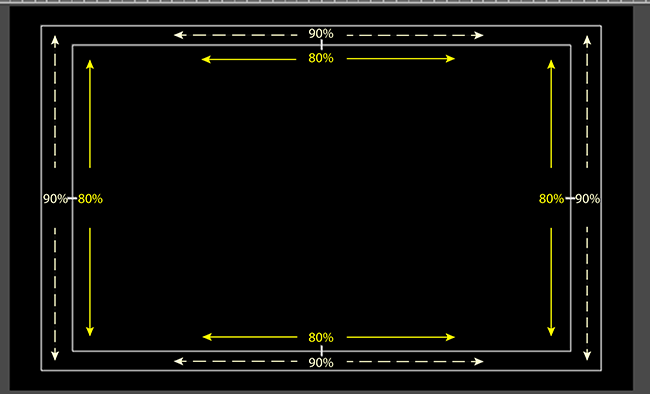Video Requirements for Vendors/Creators
Guidance on this webpage supplements other MDH contract and video information and describes requirements for branding, accessibility, and delivery. Each project is unique, and vendors are responsible for meeting requirements for their individual projects.
State law requires state agencies to comply with federal standards for accessibility. Video vendors and/or creators must follow all branding guidelines and accessibility requirements.
Accessibility
Resources
Accessibility Information for Vendors and Partners
Web Accessibility Initiative, Captions/Titles
Photosensitivity
Videos with strobing, flashing, patterns, or other elements that may invoke a photosensitivity reaction such as a seizure will not be accepted. While we may provide suggestions on review of the content, we do not conduct a Harding test. If content contains questionable elements that cannot be removed or corrected by the vendor, vendors are responsible for confirming that the video passes the Harding test.
Captions
Captions are required and are added by video creators. Captions must follow standard accessibility practices and can be open or closed.
Closed captions are turned on and off by individual viewers or presenters. They are recommended for videos hosted on platforms where individual viewers or presenters can turn captions on and off.
Open captions are burned into a video and are visible to all viewers; they cannot be turned off. They are required for videos that are hosted on platforms where individual viewers or presenters are unable to manually turn captions on and off. This includes video played during group presentations, both virtually and in-person.
Caption guidance:
- Closed captions require an SRT or VTT caption file in the video’s spoken language. The text must match what is said in the video and must include audio notes and descriptions of essential music and other sounds that enrich the video’s meaning and message; nonessential audio descriptions are encouraged.
- Open captions require (and closed captions should have) a TXT file that matches the video’s spoken language, without timecodes or other information, for publishing as a PDF and other file types.
- Glyphs, italics, vertical text, etc., are prohibited, except for languages with essential special characters or in other highly nuanced situations.
- Captions should be centered horizontally at the bottom of the screen. Their position must be consistent throughout the video, except when they would overlap text within the video. Only then may captions move to a different position, as described in the text/graphic placement section below.
- Captions should be positioned so that the text is unobscured when playback controls are activated. This is typically within the 80% text boundary line on video editing software (review the “text/graphic placement” section below for more details).
- One line of caption text is best, but two lines are allowed. Limit a caption line to no more than 42 characters when possible.
- Transitions from one caption to the next should coordinate with the video action and/or audio. Captions must follow standard punctuation rules (comma, period, etc.).
- Each caption must be visible on-screen long enough for a viewer to read, but typically no longer than seven seconds.
- Captions must comply with Web Content Accessibility Guidelines 2.1 (WCAG 2.1) for contrast.
- Do not rely solely on an outline or a shadow around text to create contrast if the video background is variable. Place light text in a dark caption box or dark text in a light text box, for example black or dark blue text on white, or white or yellow text on black.
- Avoid using color combinations of red and green, red and black, and blue and yellow. These combinations are hard for people with color vision deficiency to distinguish.
Branding
Follow all MDH logo, color, and font branding guidelines at Branding. Nonbranded videos will not be published.
Writing style
All text on screen and in captions must conform to MDH writing style guidelines and the AP Stylebook.
Internal content creators should follow MDH writing style guidelines first and the AP Stylebook second.
External partners should follow the AP Stylebook and/or work with their MDH staff person for individual guidance.
Text/graphic placement
Most video editing software can display 80% and 90% boundary lines in their timelines, similar to the example below. Place vital text and graphics inside the 80% line to ensure they are visible and uncropped on all screens. This applies to both open and closed captions.

Video
Vendors should deliver videos based on specific project needs. This includes distribution and playback plans, subject matter complexity, frame rate, and video resolution. Consultations to determine optimal delivery specifications is are available on request.
Baseline specifications for videos are:
FORMAT: MP4
CODEC: H.264
RESOLUTION: 1080p HD
FRAMERATE: 30fps
AUDIO: AAC, Stereo
TARGET BITRATE: 8-15 Mbps, VBT
For specific platform or playback guidance, review recommendations specific to the platform being used for viewing or request support from MDH communications staff.
Aspect ratio
The video export aspect ratio depends on the platform hosting the video. An aspect ratio of 16:9 is recommended for horizontal formats; a ratio of 1080 1:1 is recommended for square formats.
Check social media websites listed below for their individual platform specifications for aspect ratios, file size, video duration, and other information.
Limit the duration of social media videos to 60 seconds or less; the duration of videos hosted on YouTube may vary depending on their intended use.
Facebook: Facebook Aps and Services, Video Requirements
LinkedIn: LinkedIn Marketing Solutions, Video Ads
Instagram: Instagram Help Center, Reels
YouTube: YouTube Help, Video and audio formatting specifications